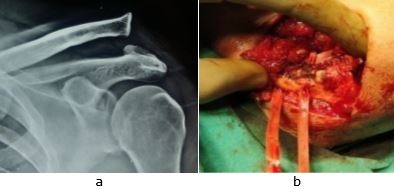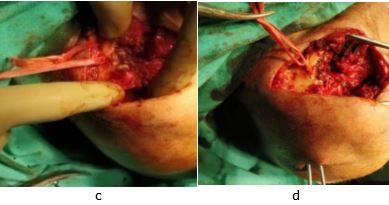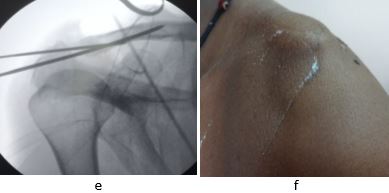Surgical Management of Acromioclavicular Joint Injuries by Ligament Reconstruction Using Mersilene Tape and Ethibond
Patidar A1*, Chauhan A2, Aggarwal A3, Singh V4, Sharma S5
1* Ashish Patidar, Associate Professor, Department of Orthopaedics, RD Gardi Medical College and Associated Hospital, Ujjain, MP, India.
2 A Chauhan, Department of Orthopaedics, RD Gardi Medical College and Associated Hospital, Ujjain, MP, India.
3 A Aggarwal, Department of Orthopaedics, RD Gardi Medical College and Associated Hospital, Ujjain, MP, India.
4 V Singh, Department of Orthopaedics, RD Gardi Medical College and Associated Hospital, Ujjain, MP, India.
5 SK Sharma, Department of Orthopaedics, RD Gardi Medical College and Associated Hospital, Ujjain, MP, India.
Background: Acromioclavicular (AC) injuries account for 9% to 12% of all shoulder injuries. Rockwood grade IV to VI AC injuries require surgical fixation, which can be done by Mersilene tape reconstruction, K-wire transfixation, hook plates, reconstruction using autografts, or suture anchors. But no gold standard procedure has been established till date.
Material and Methods: 12 patients of AC joint disruption treated by surgical reconstruction using mersilene tape and ethibond suture were evaluated functionally using Visual analog scale (VAS) and Constant and Murley scores and radiological for re-displacement and fixation.
Results: The mean age in the group was 46.6 years (range 26 to 61), with male to female ratio of 3:1. Mean delay in surgery was 11 days (range 4 to 14 days), mean blood loss was 100 ml and mean duration of surgery was 54 min. The mean pre-operative VAS score improved from 6.41 to post-operative score of 2.68 and 1.25 at 6 and 12 months respectively. Constant Murley score improved from a mean pre-operative score of 51 to a post-operative score of 88.33 and 92.08 at 6 and 12 months respectively. At the final follow up all the patients had satisfactory results in terms of pain, cosmetic correction and movements and strength of the shoulder. The AC joint was clinically as well as radiologically stable in all the cases.
Conclusion: Anatomic reconstruction of AC joint disruption requires reconstruction of both coracoclavicular ligament as well as acromioclavicular ligament to achieve stability in both superior-inferior as well as antero-posterior plane, which can be achieved by mersilene tape fixation augmented by 5-0 ethibond suture leading to excellent results.
Keywords: Acromioclavicular injuries, Mersilene tape, Ethibond, Ligament reconstruction
| Corresponding Author | How to Cite this Article | To Browse |
|---|---|---|
| , Associate Professor, Department of Orthopaedics, RD Gardi Medical College and Associated Hospital, Ujjain, MP, India. Email: |
Patidar A, Chauhan A, Aggarwal A, Singh V, Sharma S, Surgical Management of Acromioclavicular Joint Injuries by Ligament Reconstruction Using Mersilene Tape and Ethibond. ojmpc. 2021;27(1):28-32. Available From https://ojmpc.com/index.php/ojmpc/article/view/131 |





